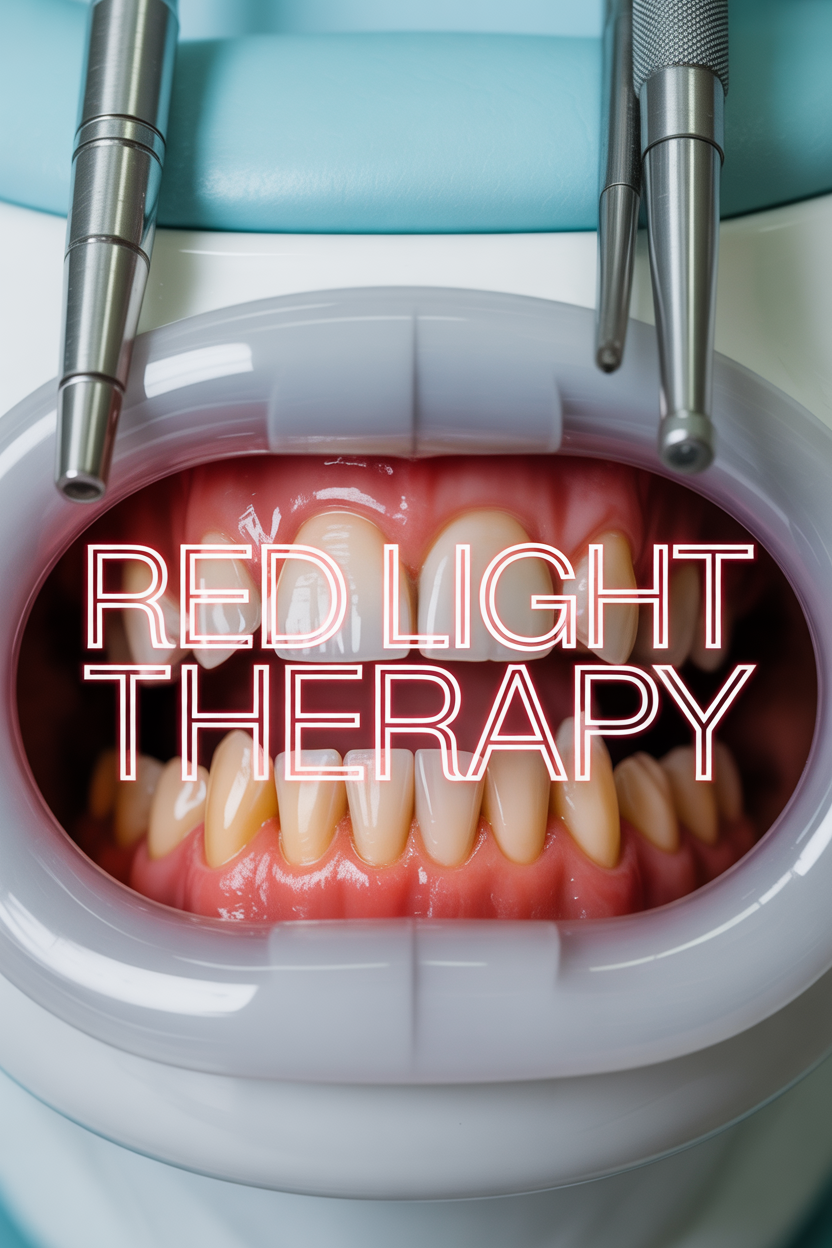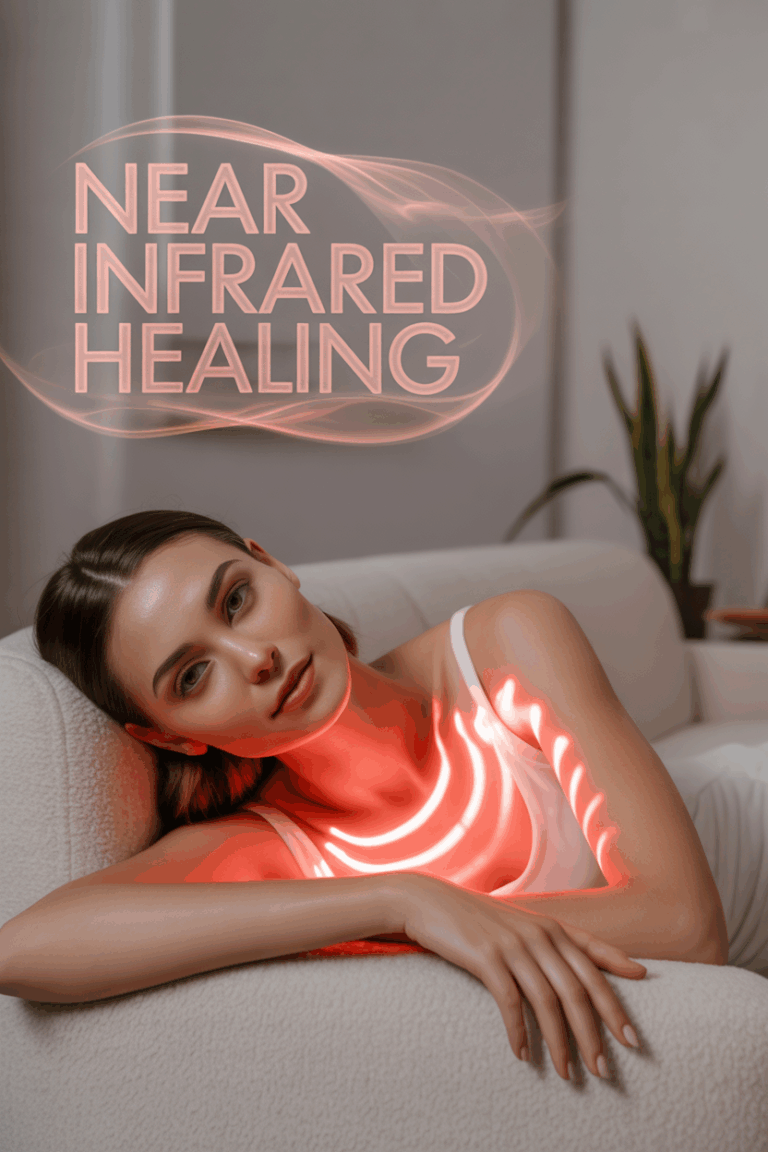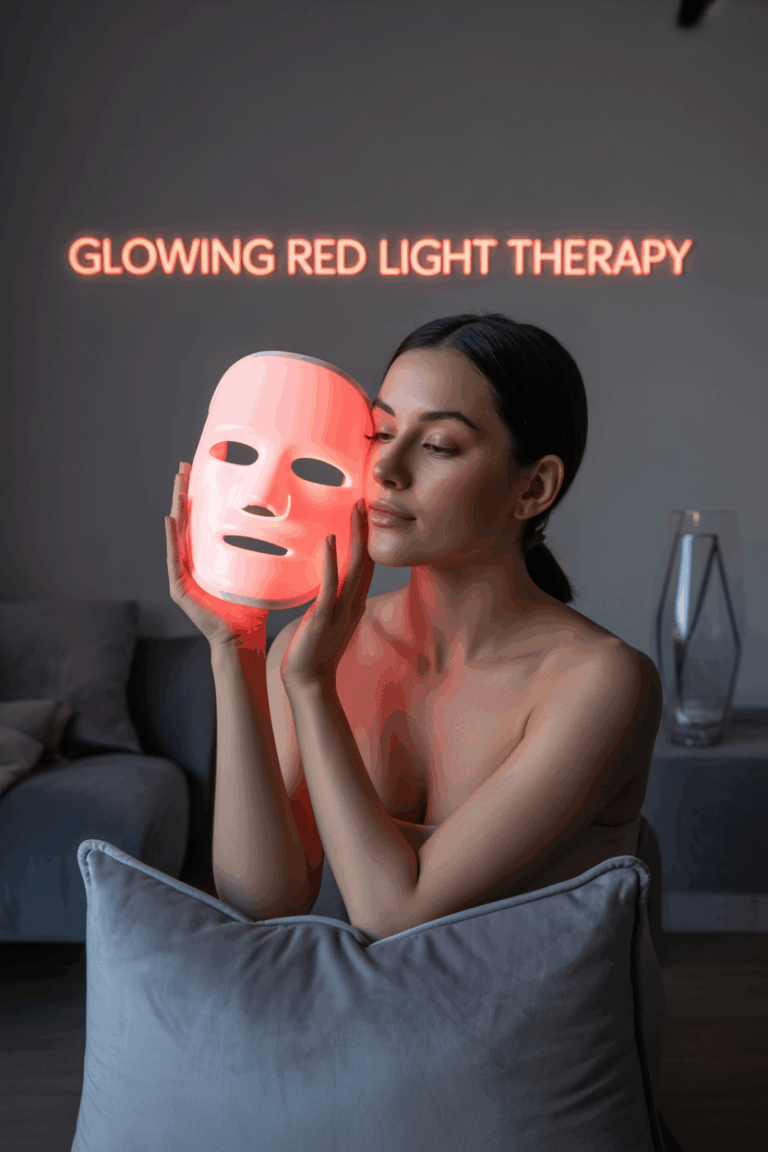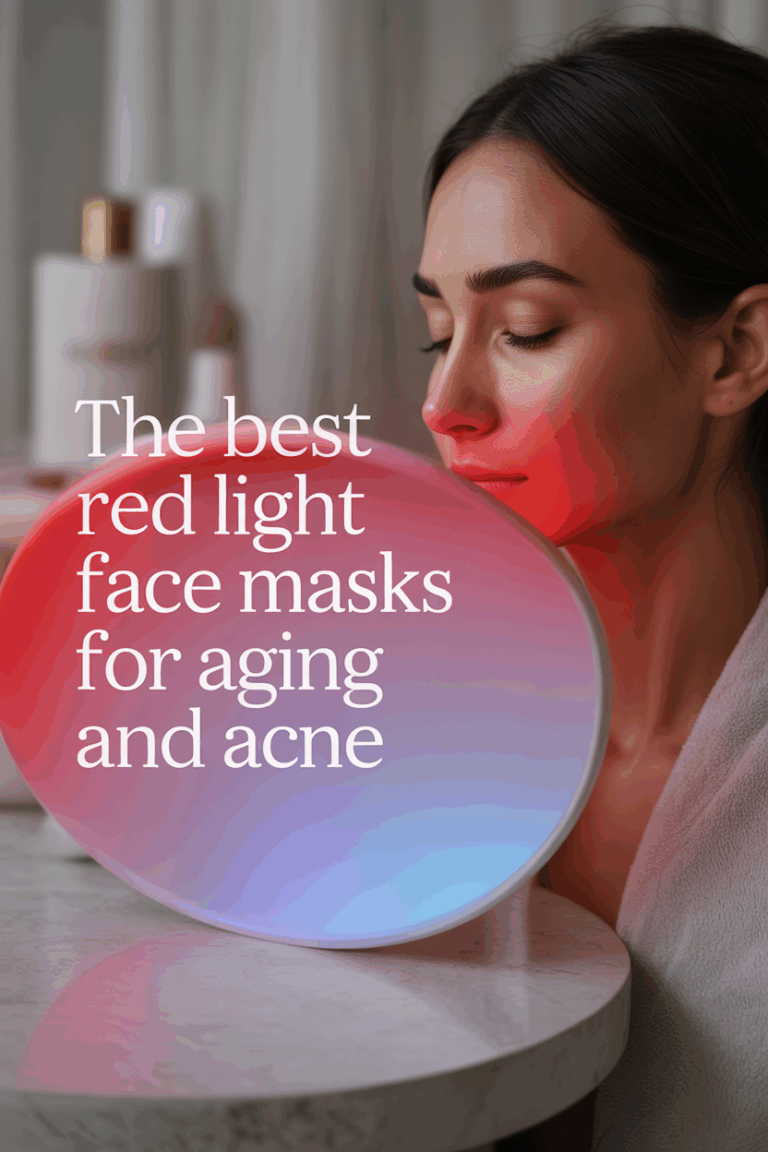Red Light Therapy for Teeth Soothes Sensitivity

The Shocking Pain of Tooth Sensitivity

Without much thought, I chomped on a gooey, sticky piece of candy, and the crown protecting my lower jaw popped off.
That sudden, sharp jolt of pain is a feeling many of us know all too well. “Ouch!” doesn’t even begin to describe the sensation.
Tooth sensitivity can feel like a form of torture, turning simple pleasures like eating a sweet treat or sipping a cold drink into a dreaded experience. It’s a sudden, sharp pain that can disrupt your entire day.
While dentists have several tools to help, a gentle, natural solution is gaining attention. Studies now show that low-energy red light offers a powerful way to reduce and even eliminate tooth sensitivity pain.
What Is Red Light Therapy for Teeth?

If you’re looking for a natural, attainable way to improve your oral health, red light therapy may be the answer. This gentle therapy is an effective and scientifically-backed method for reducing tooth sensitivity.
The most well-studied wavelength for this purpose is red light around 660 nm, known for its deep-penetrating and healing properties. It works by addressing the inflammation and nerve irritation that cause the pain.
What’s truly exciting is the availability of full-mouth red light therapy devices for convenient at-home use. You can now incorporate this powerful treatment into your daily self-care routine.
Beyond sensitivity, these devices can also help reduce gum inflammation. This may offer benefits for issues like receding gums and contribute to your overall oral wellness.
How Red Light Therapy Calms Sensitive Teeth

Red light therapy, also known as photobiomodulation, works at a cellular level to bring relief. It doesn’t just mask the pain; it helps your body heal itself from within.
The light gently penetrates your gum and tooth tissue, where it is absorbed by mitochondria. These are the tiny “powerhouses” inside your cells responsible for generating energy.
This absorption process helps to stimulate cellular repair, increase blood flow, and reduce inflammation. Increased circulation brings more oxygen and nutrients to the area, further supporting the healing process.
By calming inflammation, the therapy directly soothes the overactive nerves that send sharp pain signals to your brain. This cellular-level action is what makes it so effective for lasting relief.
What Causes a Sensitive Smile?

Tooth sensitivity, known as dentinal hypersensitivity in the dental world, is a very common issue for adults. It’s that sudden, sharp pain you feel when your teeth encounter hot, cold, sweet, or acidic foods and drinks.
The underlying cause is the wearing away of your tooth’s protective outer layer, known as enamel. This exposes the more sensitive inner part of your tooth called dentin, which contains thousands of microscopic tubes that lead directly to the tooth’s nerve center.
According to a 2019 meta-analysis, about one-third of all adults suffer from this condition, making it a significant oral health concern.
The wearing down of enamel can happen for many reasons, including brushing too hard, acidic foods and drinks, teeth grinding, or an injury.
How Do Dentists Treat Tooth Sensitivity?

Fortunately, if you suffer from dentinal hypersensitivity, you have options. Dentists offer a range of treatments to manage and alleviate the discomfort.
Common in-office treatments include desensitizing agents like specialized resins and professional-grade fluoride varnishes. Other advanced options may involve iontophoresis, which uses a gentle electrical current to help desensitizing agents penetrate the tooth.
High-intensity laser therapy is another tool used by dental professionals. This method works to seal the tubes in the dentin, blocking the pathway to the nerve.
Among these treatments, red light therapy stands out as a gentle, effective, and non-invasive option. It harnesses the power of light to provide significant relief, making it an excellent standalone or complementary therapy that can be used in a dental office or conveniently at home.
Gentle Light vs. Powerful Lasers: A Surprising Study

When it comes to light-based treatments, does more power mean better results? A 2022 study published in the Swiss journal Life investigated this very question by comparing low-energy red light to high-energy laser therapy for tooth sensitivity.
Researchers analyzed data from 920 teeth that were treated with light to reduce dentinal hypersensitivity. It’s important to understand the difference: red light therapy (or photobiomodulation) is a low-energy application, while laser therapy uses high energy.
The teeth were divided into three groups:
- 387 were treated with low-energy red light therapy using 660 nm light.
- 327 were treated with a high-energy 1064 nm infrared laser.
- 206 were treated with a high-energy 1340 nm infrared laser.
To measure the results, the researchers used a visual analog scale (VAS) to assess sensitivity before treatment and at several follow-up points. This standardized the pain ratings for all patients, providing clear, comparable data.
Red Light Therapy Offers Lasting Pain Relief

The results from the study comparing light therapies were remarkable, especially over the long term. Researchers tracked sensitivity immediately after treatment, at one week, four weeks, six months, and finally, one year later.
Throughout the study, the VAS scores for the low-energy red light therapy group were consistently better than those for both high-energy laser therapy groups. While all treatments offered some relief, one stood out for its lasting effects.
At the one-year mark, the treatment had completely eliminated tooth sensitivity in the red light therapy group. These patients reported zero sensitivity in the teeth that had been treated a full year prior.
In contrast, while the high-energy infrared laser groups did experience a significant reduction in sensitivity, it was not 100%. This provides powerful evidence that the gentle, low-energy delivery of red light was superior for achieving complete and lasting pain relief.
A Powerful Combination: Red Light and Fluoride

Red light therapy is impressive on its own, but how does it perform when paired with traditional treatments? A 2019 study in PLOS ONE explored this by comparing fluoride to photobiomodulation for tooth sensitivity.
In this clinical trial, patients were separated into four treatment groups, and their sensitivity was rated using the same visual analog scale (VAS):
- Fluoride treatment only
- Red light therapy only
- Fluoride and red light therapy combined
- A placebo group
The results showed that the fluoride, red light therapy, and combined treatment groups all experienced a significant reduction in tooth sensitivity compared to the placebo. This reinforces that both red light and fluoride are effective standalone treatments.
However, the very best results were seen in the group that received red light therapy combined with fluoride treatment. This powerful outcome supports the idea that red light therapy complements and enhances traditional treatments, creating an even greater effect for better relief.
Enjoy Teeth Whitening Without the Post-Treatment Pain

If you’ve ever wanted a brighter smile but hesitated because of the painful sensitivity that can follow a teeth bleaching procedure, you’re not alone. This temporary sensitivity is a common side effect.
A 2016 randomized clinical trial tested whether red light therapy could be the solution. In the study, 66 patients underwent in-office bleaching and were then divided into three groups to manage the after-effects.
- Low-energy red light therapy (660 nm)
- Low-energy infrared light therapy (810 nm)
- A placebo treatment
Pain levels were tested one hour after bleaching, and then again at 24 hours, 48 hours, and 30 days. While all groups felt similar sensitivity after one hour, the 24-hour mark showed a clear winner: the red light group had the most significant reduction in tooth sensitivity pain.
Interestingly, while the infrared group lagged behind at 24 hours, it caught up by the 48-hour test. Both red and infrared light proved significantly better than the placebo, which still had notable sensitivity. This confirms red light therapy can help you achieve a whiter smile without the dreaded “ouch” factor.
How Do At-Home Oral Care Devices Work?

The same technology proven in clinical studies is now available in dental red light therapy kits designed for home use. These devices often combine multiple wavelengths of light to achieve a spectrum of oral health goals.
The red light has strong scientific backing for reducing tooth sensitivity and dental pain. It works by calming inflammation and promoting cellular repair, getting to the root of the problem.
Many devices also incorporate infrared light, which penetrates even deeper into the tissue to further aid in pain relief and repair. Emerging evidence also suggests both red and infrared light may help reduce the gum inflammation linked to conditions like receding gums.
Finally, blue light is often included for its antibacterial and teeth-whitening properties. This helps to combat harmful bacteria in the mouth and can gently lift surface stains, contributing to a healthier and brighter oral environment.
Your At-Home Path to Oral Wellness

Incorporating red light therapy into your daily routine is incredibly simple. At-home devices are designed for convenience and ease, making oral wellness an attainable goal.
A typical session with an oral care device is just five minutes, once a day. This makes it easy to add to your morning or evening routine, perhaps while you’re unwinding or getting ready for the day.
I’m a huge fan of NovaaLab products for their quality and effectiveness. They offer a very reasonably-priced Oral Care device that uses this technology.
While I have not reviewed that specific device yet, you can see my positive experience with the brand in my NovaaLab Light Pad guide. Investing in a quality device is an investment in your long-term oral health and comfort.

NovaaLab oral care mouth device and controller
Embrace a Brighter, Pain-Free Smile Naturally

The scientific evidence is clear: red light therapy is a highly effective, natural treatment for reducing tooth sensitivity. It’s a gentle yet powerful tool for reclaiming your comfort and confidence.
While not a magic bullet, low-level red light has shown impressive results, in some cases outperforming high-power lasers in long-term pain relief. It works beautifully on its own and even better as a complement to traditional treatments like fluoride.
Whether you receive treatment from a dentist or use a convenient at-home device, you are choosing a scientifically supported path to wellness. You can manage dental pain, reduce gum inflammation, and take a proactive step toward a healthier mouth.
By embracing red light therapy, you are not just treating a symptom. You are supporting your body’s natural healing processes for a brighter, more comfortable, and pain-free smile.






